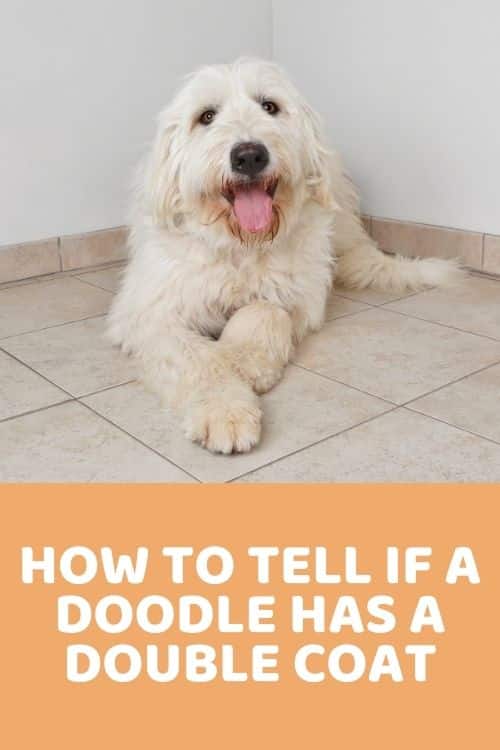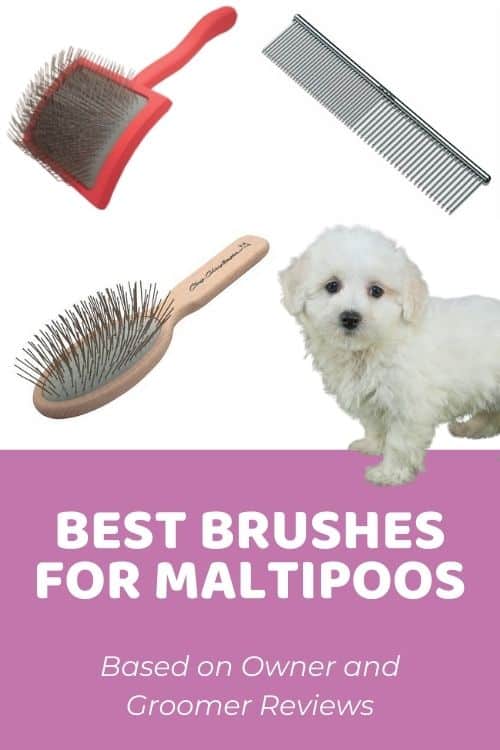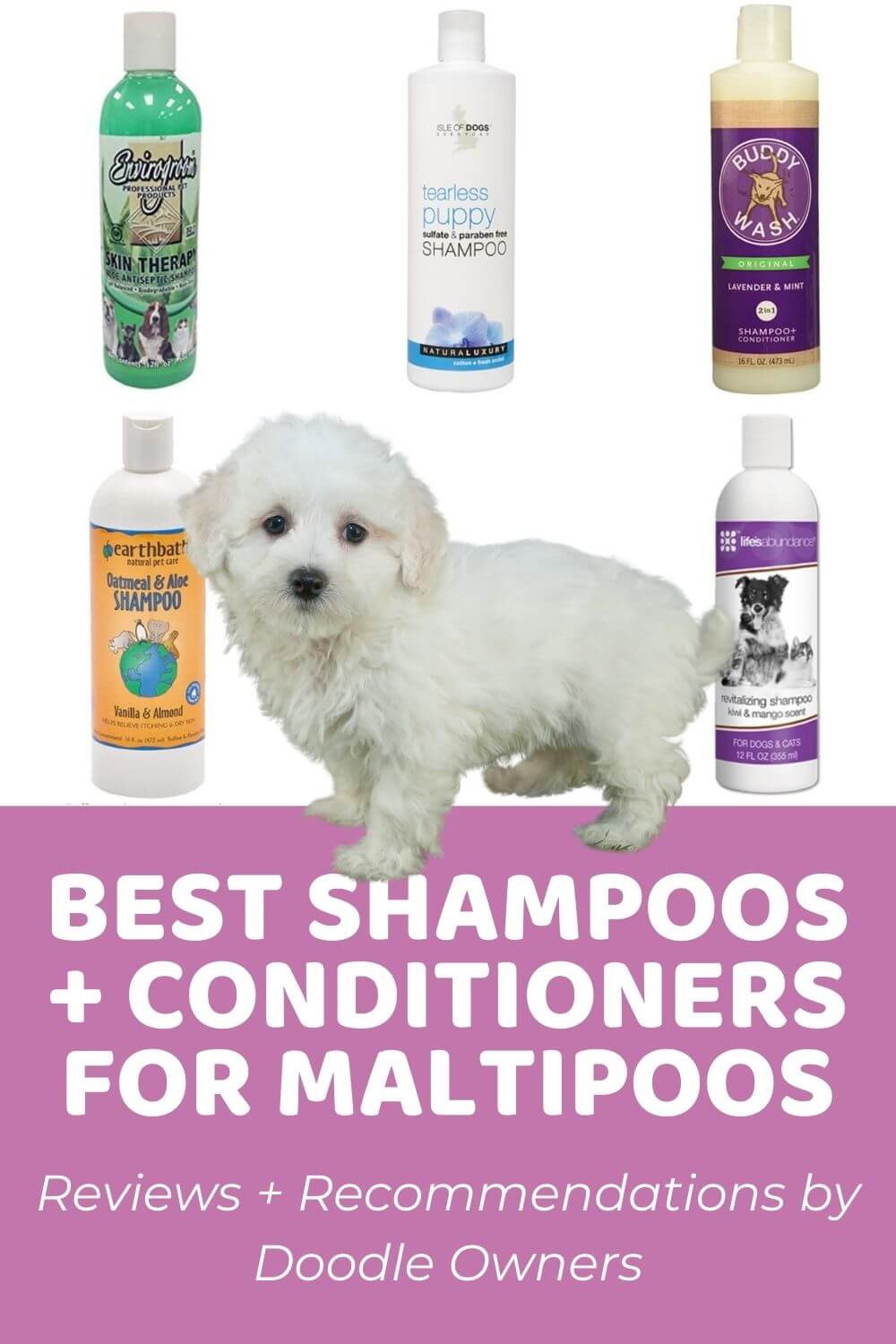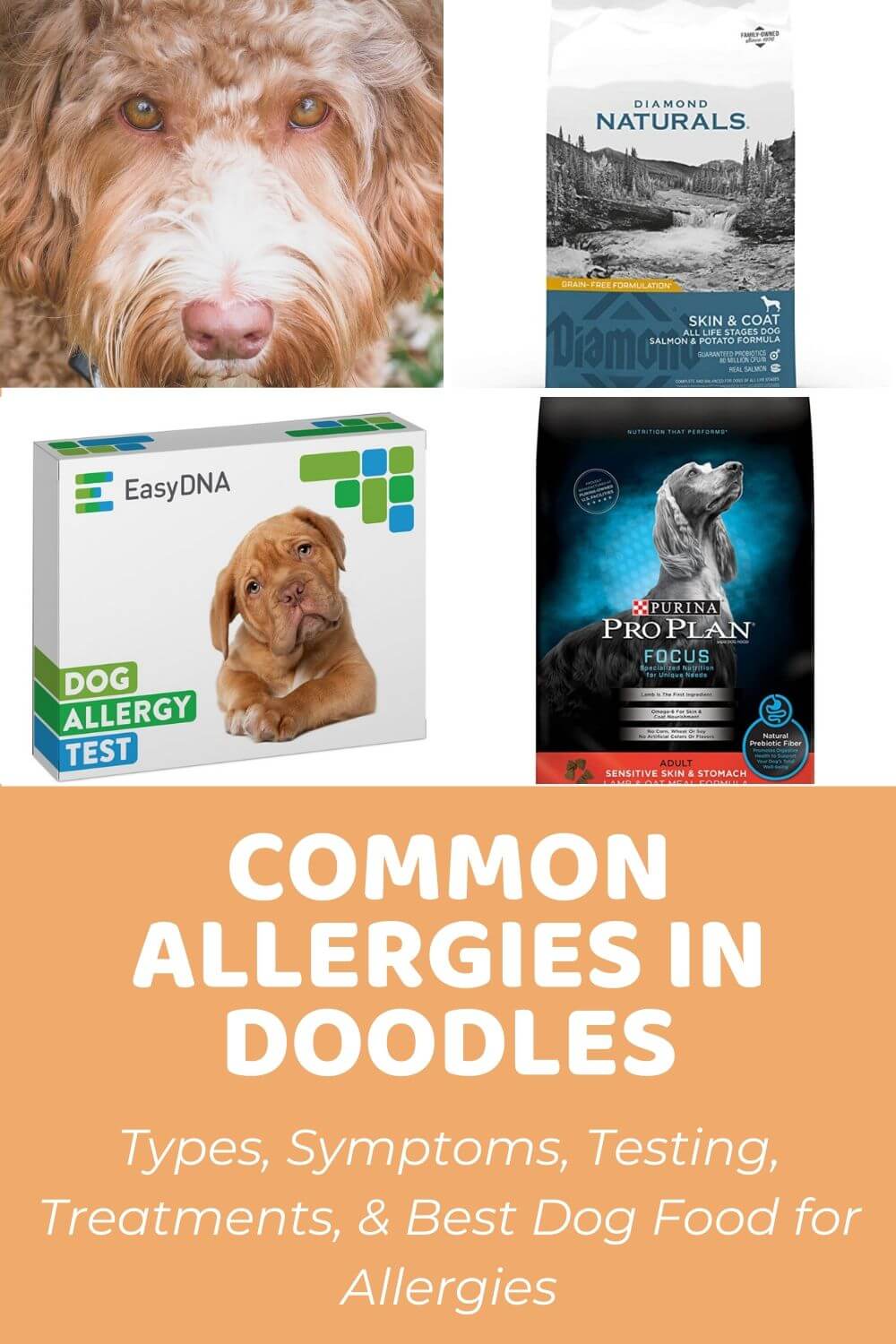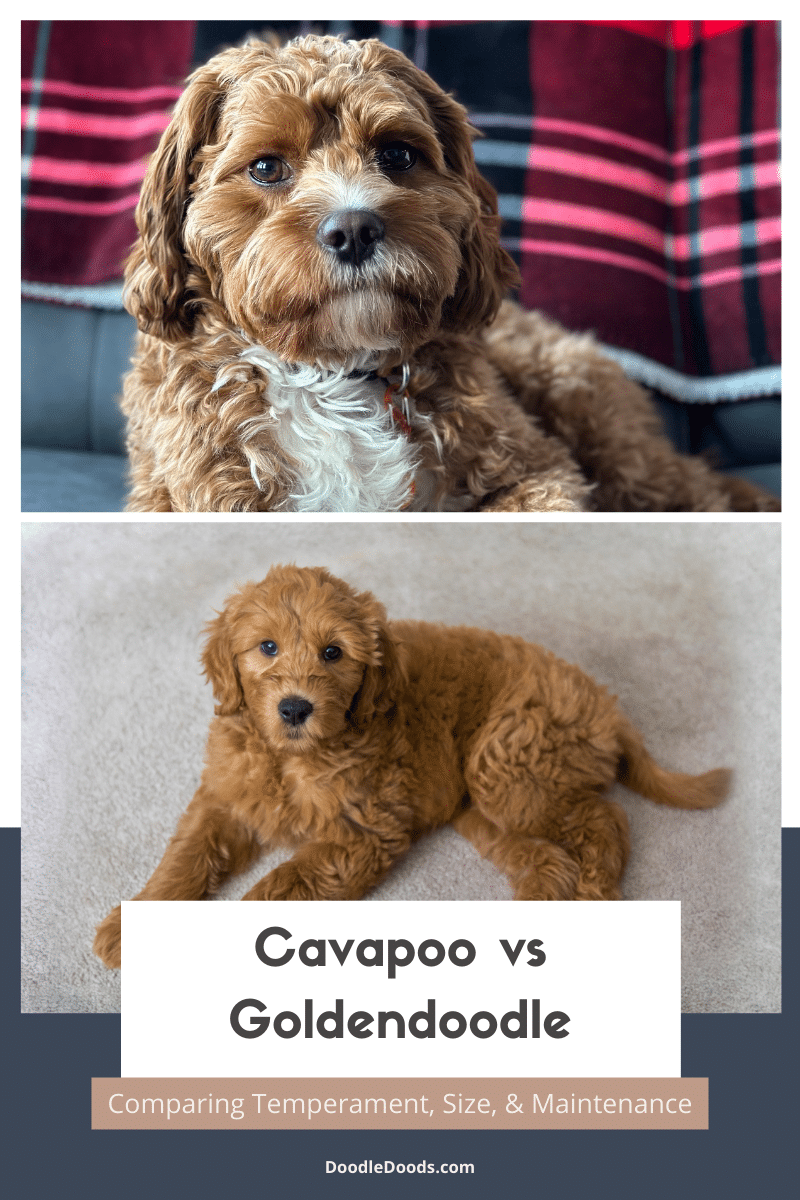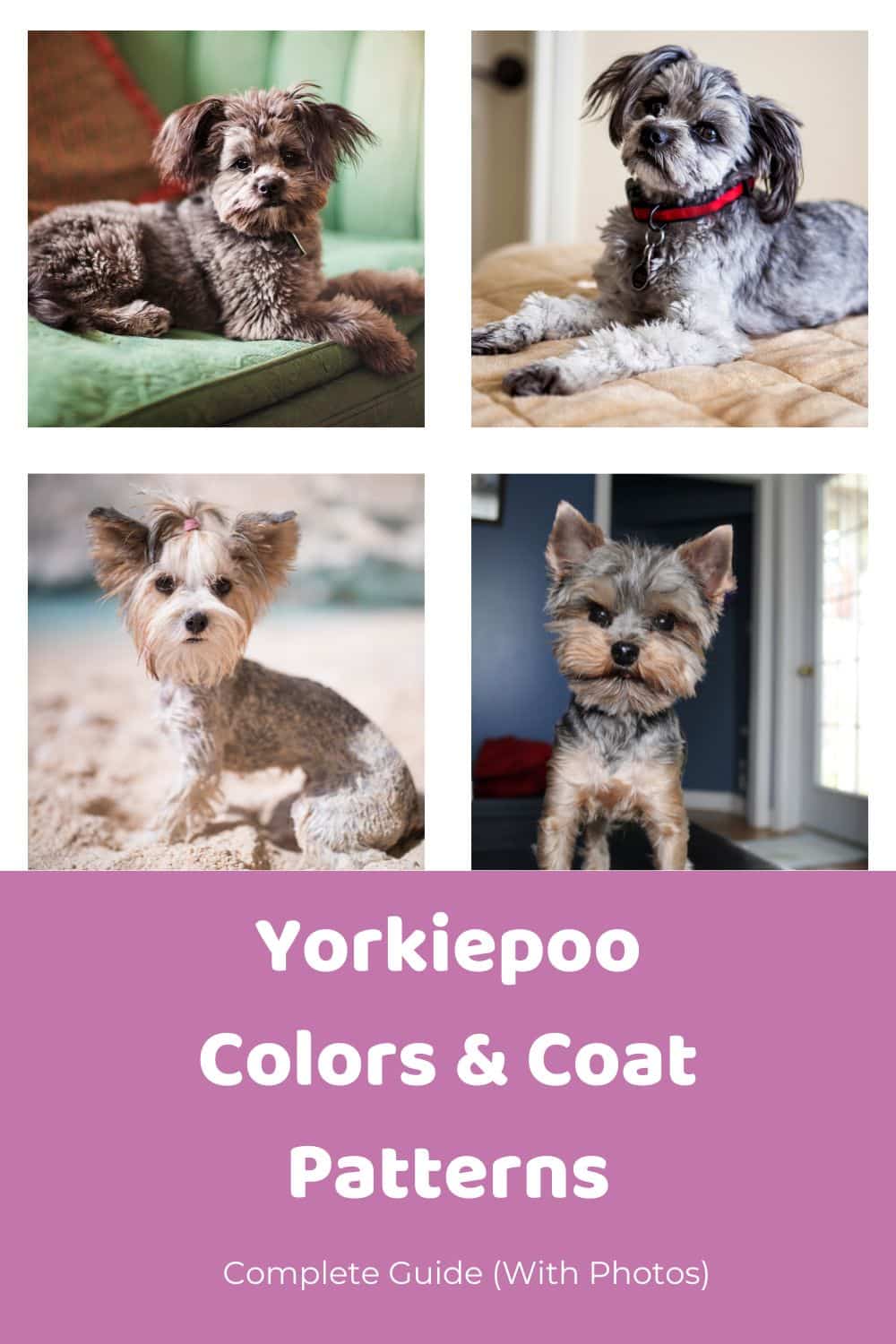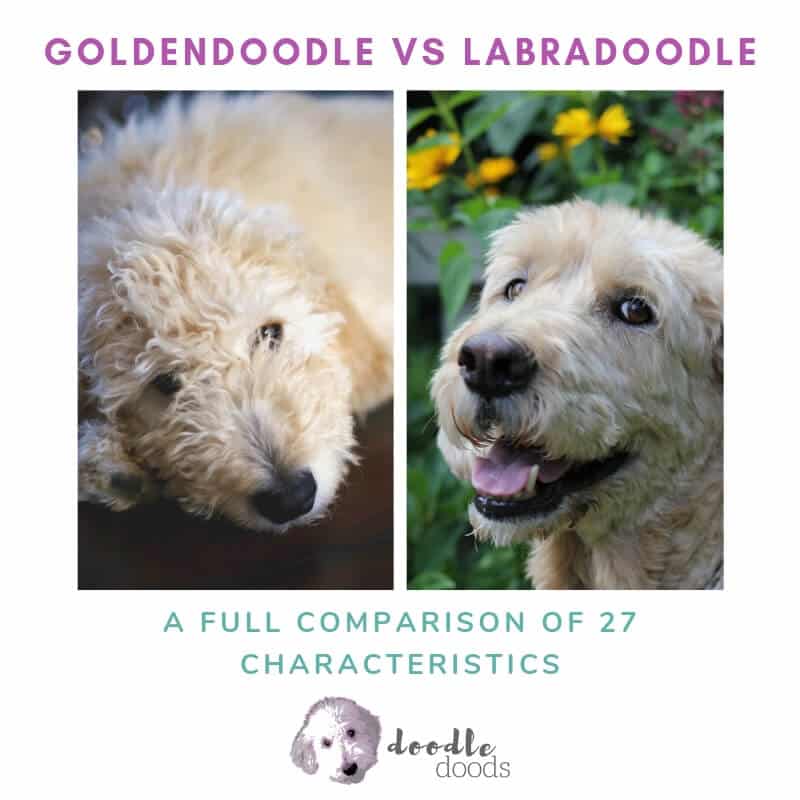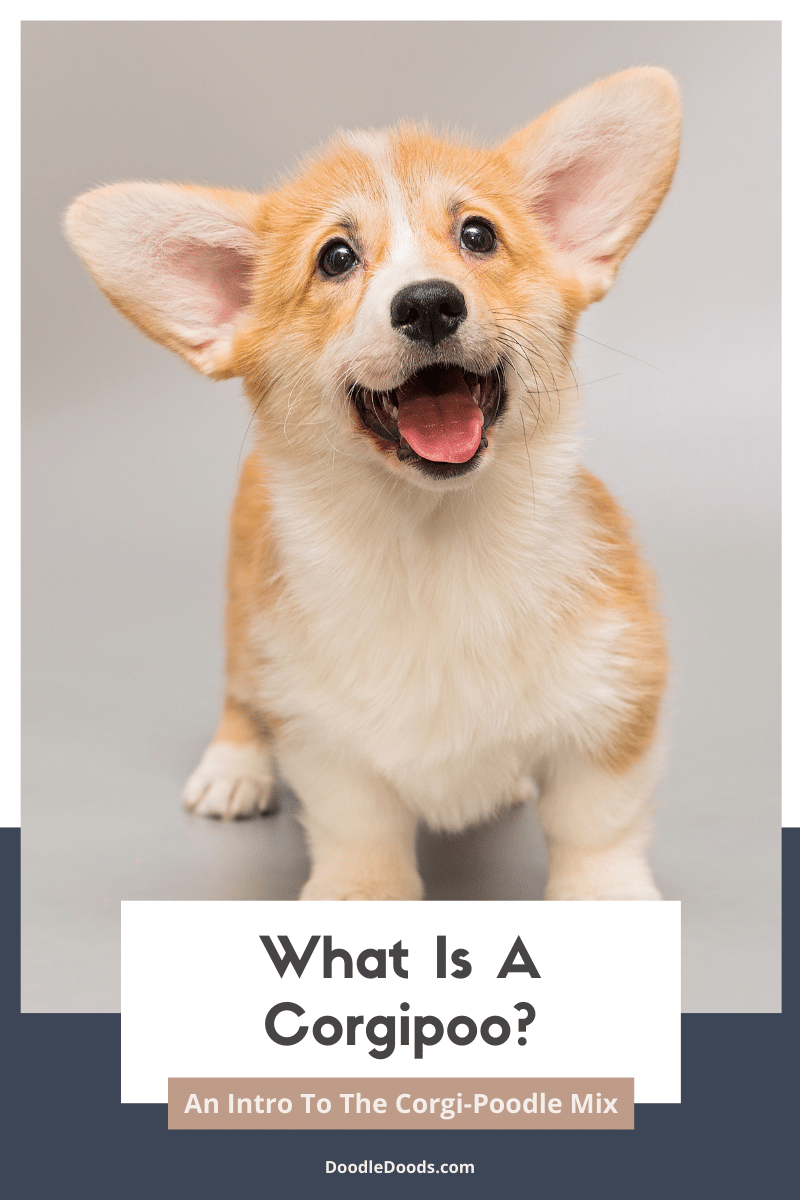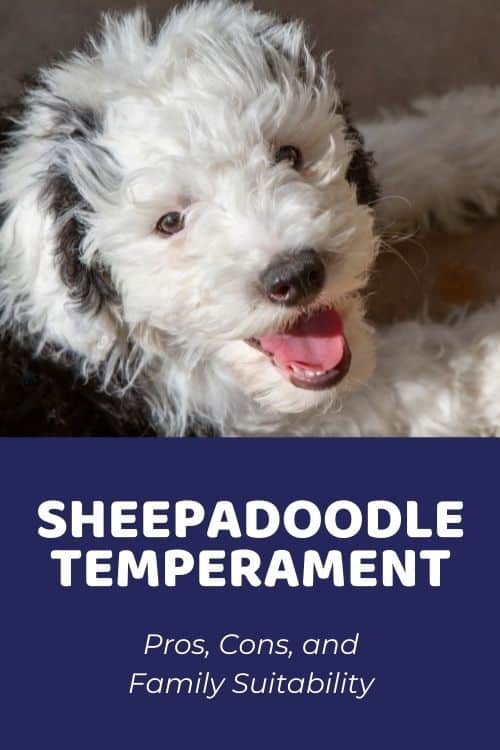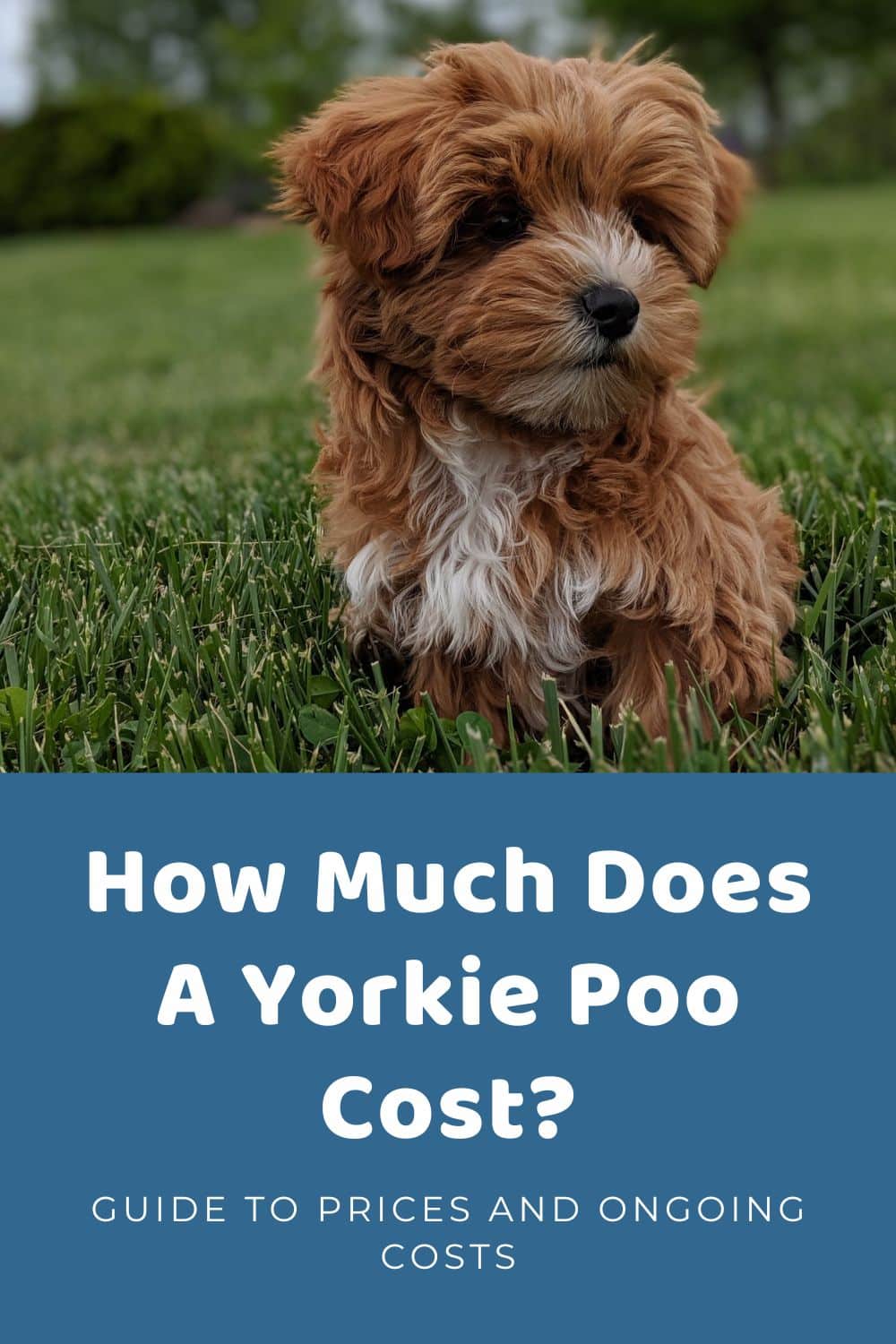Like other Poodle mixes, Maltipoos are praised for their hypoallergenic and low-shedding coats. But is all as it seems? Are Maltipoos hypoallergenic? Do Maltipoos Shed? Or can they still trigger allergies in some people?
The rise of so-called ‘hypoallergenic’ hounds is giving allergy sufferers cause to hope that it might be possible for them to adopt a canine best friend after all. But what does the science say? Are Doodles like the mega-friendly Maltipoo truly the solution to allergy woes that breeders promise them to be? Let’s take a look!
Table of Contents
- Pet Allergies: What Are They and What Causes Them?
- Why Dogs Shed: A Quick Overview
- The Great “Maltipoos Are Hypoallergenic” Debate: So Are Maltipoos Hypoallergenic?
- Do Maltipoos Shed?
- Are Maltipoos Hypoallergenic And Does Their Generation Matter?
- How To Manage Allergies Triggered By Your Maltipoo & Reduce Maltipoo Shedding
- Are Maltipoos Hypoallergenic & Do They Shed? FAQs
- Are Maltipoos Hypoallergenic & Do They Shed? Final Conclusion
Pet Allergies: What Are They and What Causes Them?
According to Healthline, pet allergies affect up to 30% of the country. While cat allergies are far more common, dog ones are more severe. This means that, unfortunately, many people who would love to have a dog will be reluctant to get one because of worries that their symptoms will flare up if they do share their house with a pet.
The widespread myth of pet allergies is that symptoms arise because of an intolerance to loose hair or fur. This simply isn’t the case, but it’s easy to see why people think it. In fact, what the body is responding to are specific proteins found in the animal’s skin cells, saliva, or urine.
Yet, when hair (or fur) is shed, it often carries with it dried saliva from where a pup has licked themselves, or the biggest culprit: dander. This is the name given to flakes of skin that have been shed from the body. As these tiny particles are so small, they can all too easily get breathed in, and…symptoms begin.
Therefore, while the allergy is not linked directly to the hair itself – and people can indeed even be allergic to hairless animals – the more hair, the more loose hair about the place and, obviously, the more dander too. This increases the symptoms tenfold as the body struggles to eliminate and flush out what it perceives as a harmful invader.
The most common symptoms of a pet allergy include sneezing, runny nose, itchy, red, and watery eyes, nasal congestion, itchy nose, itchy roof of mouth or throat, postnasal drip, cough, and feelings of pressure and pain in the face. It can even lead on to skin issues, such as raised, red patches known as hives, eczema, and itchy, flaky spots.
Pet allergies can also exacerbate asthma, making it difficult to breathe with chest tightness and/or pain, an audible wheezing or whistling breath sound, and difficulty sleeping – in large part because of such symptoms. All-in-all it’s easy to understand why pet allergy suffered prefer to remain far away from Fido!
Why Dogs Shed: A Quick Overview
You’re all gussied up for a night on the town. You’re headed for the door when you suddenly notice that you’ve somehow acquired an unfortunate coating of fur or hair on your shiny, new outfit. It only could have come from the hound, but you haven’t been near him for hours – what gives?! While some may shrug and hit the road anyhow, for others having hair all about the place is a deal-breaker when it comes to having a pet.
Shedding is simply a fact of life for any animal with hair or fur. Dead and damaged coat needs to make way somehow for new, healthy coat. For many dog breeds, the type and thickness of their coat follows the seasons. This means that they tend to lose more hair or fur at certain times of the year – all in the name of protection and temperature regulation.
However, not every breed sheds the same amount. This is often to do with the type of coat they have inherited from their parent pups. Double-coated dogs are by far the biggest shedders. These pups have a longer regular coat and, beneath it, a shorter, denser layer that keeps them warm in the winter. This coat is ‘blown out’ in the spring and often in the fall, too (plus, what can often feel like every month in-between!)
There is also a significant difference between hair-coated and fur-coated canines. While both hair and fur are made from the same substance (keratin – which is responsible for fingernails, too), there are critical variations in their “lifecycle” that are useful to understand. Significantly, hair spends far longer in the growth stage of this cycle than fur. What this means is that not only does it get much longer than fur, but it sheds far less often too.
The Great “Maltipoos Are Hypoallergenic” Debate: So Are Maltipoos Hypoallergenic?
Doodles have repeatedly been marketed as incredible hypoallergenic dogs! I mean, just take a look at some breeder’s websites. They’ll have you half convinced that these admittedly lovely dogs are the dream solution for dog allergy sufferers everywhere. What evidence is this based on, though?
Well, as we know now, it’s the proteins in dander and saliva that are the problem, so anyone claiming that their low-shed puppies won’t cause allergies at all are not speaking the whole truth…
However, we also know dead hair and fur provide the perfect transport for these, getting them up in the air and all about the house. For this reason, experts very cautiously do list some low-shedding breeds as being less likely to trigger allergy symptoms. The American Kennel Club (AKC) has this to say, “The truth is, there are no 100% hypoallergenic dogs, dog breeds, or mixed-breeds, but there are many dog breeds that are less allergenic for people with dog allergies.”
So, with Poodles being listed as less allergenic than other breeds, that’s where the idea that Doodles are hypoallergenic comes from. BUT, we know that Doodles have two types of dogs’ genes in the mix. So, when it comes to Maltipoos, just exactly how likely is it that the puppies will inherit that glorious Poodle coat?
The answer is…we don’t know, BUT it doesn’t matter anyway! The Maltese, as another single-layered, hair-coated breed, is also on this special “hypoallergenic” list! So, no matter which hair type your Malti puppy ends up with (the curly Poodle one of the silky Maltese one), they will be considered more hypoallergenic than most other dog breeds. Hooray!
Do Maltipoos Shed?
Now for the all-important question – where do Maltipoos sit on these double-coat vs. single-coat, hair vs. fur distinctions? Well, you’ve probably figured out by now that Maltipoos, as lesser shedders, are, in fact, a single-layered, hair-coated breed.
This is something that they happily inherit from both parent dogs – the Maltese as well as the Poodle. Although, obviously, the coats of these dogs differ in other ways. This, along with a couple of other things, can have an impact on how much they SEEM to shed, including…
Coat Type
You’re likely pretty familiar with the Poodle’s iconic long, curly locks. Their single-layered, low-shedding hair coat is the whole reason Doodles, known as the wondrous hypoallergenic dogs, even exist.
You may be less familiar with the Maltese, though. While also a single-layered, low-shedding hair coat, the Maltese hair hangs long, fine, and usually grows straight down to the ground, although it can also have a slight wave, too. Either way, that’s quite a difference!
For this reason, Maltipoos are said to have three distinct coat types:
- Soft and silky
- Thick and curly
- Wiry and wavy
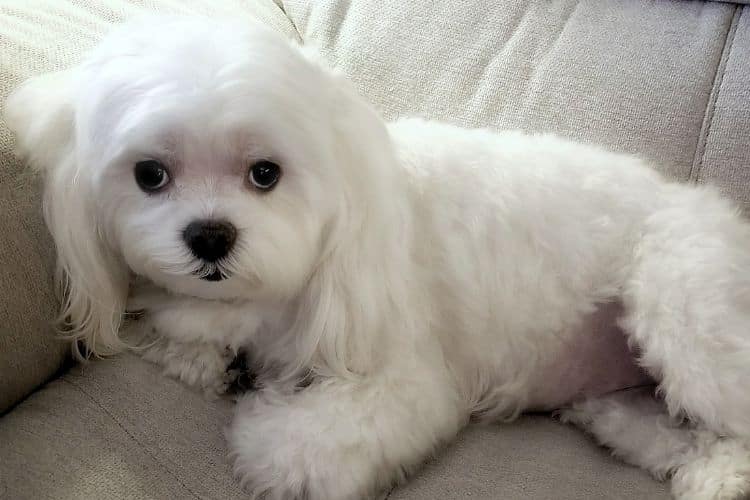
While these are all obviously low-shedding, the straighter hair type may appear to shed more simply because dead and damaged hair is less likely to get caught up in the coat. Curly, thick hair naturally traps this (and everything else it comes into contact with), which is one of the reasons why pups with a curlier coat require more frequent brushing to prevent matting.
Size
Secondly, your four-legged buddy’s hair loss amount feel could be impacted by their size. With two little parents, whichever of the two Maltipoo sizes you opt for (Toy or Mini), you’re going to end up with a small dog. While the type you get has no specific bearing on shedding levels, larger dogs may seem to shed more simply because they have more coat to lose. However, as the size variation between these two Doods is quite slight, so too will be the perceived difference in shedding. It’s likely you won’t notice much in it at all.
But what coat type is your Maltipoo likely to end up with, anyway? Obviously, the biggest factor at play here is their genes…
Are Maltipoos Hypoallergenic And Does Their Generation Matter?
The short answer is yes, Maltipoos are hypoallergenic dogs because they’re single-layered dogs. This means that they don’t have a shedding undercoat that many dog breeds, even some Doodle breeds have. Plus, Maltipoos are much less likely to trigger allergies when compared to double-coated dog breeds.
One of the best things about the Maltese-Poodle mix is that they’re always single-layered dogs. This means that regardless of your Maltipoo’s coat type or generation, they’ll shed very minimally, if any at all. Not only are Poodle’s single-coated, but so is the Maltese. It’s a win-win combination!
In contrast, many other Poodle mixes can, in fact, inherit the double coat from their other parental breed. If these Doods do inherit a double coat, it means that they’re not as suitable for people suffering from allergies. And that’s where the issue arises. This is especially common in first-generation Doodles, where the puppies have a 50-50 mix of both parental breeds.
Fortunately, a Maltipoo’s generation won’t affect their hypoallergenic potential. Regardless if your Maltipoo is an F1, F1b, or even F2b, it won’t negatively impact their hypoallergenic qualities.
However, the generation can affect the Maltipoo’s coat type, depending on which genes are more dominant. So, if your Maltipoo takes more after their Poodle parent, they’ll likely have tighter and more textured curls, whereas if they lean more on the Maltese side, they’ll have more of a straight coat.
| 1st Parent | 2nd Parent | % Maltese* | % Poodle* | |
| F1 Maltipoo (first-generation) | Maltese | Poodle | 50% | 50% |
| F1B Maltipoo (first-generation backcross) | F1 Maltipoo | Poodle | 25% | 75% |
| F1BB Maltipoo (first-generation backcross backcross) | F1B Maltipoo | Poodle | 12.5% | 87.5% |
| F2 Maltipoo (second-generation) | F1 Maltipoo | F1 Maltipoo | 50% | 50% |
| F2B Maltipoo (second-generation backcross) | F1 Maltipoo | F1B Maltipoo | 37.5% | 62.5% |
| F2B Maltipoo (alternate cross) | F2 Maltipoo | Poodle | 25% | 75% |
| F3 / Multigen Maltipoo | F1B Maltipoo or higher | F1B Maltipoo or higher | Varies | Varies |
*These are generic calculations only – genetics are rarely mathematically accurate.

How To Manage Allergies Triggered By Your Maltipoo & Reduce Maltipoo Shedding
So the good news is that a Maltipoo is less likely to make allergies flare-up. However, “less likely” is the key phrase here. While saliva will be less of a problem with these little loves than with many larger ones, there is still the issue of dander. Fortunately, there are a few things you can do to further minimize this problem and keep your home a dander-free and shed-free zone.
Frequent Grooming and (Frequent-ish) Bathing
Removing dead hair and dry skin in as controlled a way as possible is key. With regular grooming, a decent brush will trap the hair, making it super simple to dispose of. The same with bathing; you can wash dead hair and dander right down the drain. With longer hair dogs, you might also consider frequent trims (every 7 to 12 weeks) for even better results.
A word of caution: if you bathe your pup too frequently, it could actually have the opposite effect to intended. A dog’s coat contains oils that keep it healthy, and washing these away can dry out the skin and hair, making it more prone to shedding. Aim for no more than once a fortnight and opt for super hydration-boosting shampoos. Waterless wipes can be used to keep things in check between washes.
Thorough and Regular House Cleaning
Obviously, good housekeeping habits are a must for ensuring that any hair that sneaks through the grooming process and does land on your furniture or floors doesn’t stay there. Regularly brushing down couches and chairs, vacuuming carpets and sweeping kitchen floors where dander can accumulate is all part of this.
You might also consider investing in an air purifier with a High-Efficiency Particulate Air (HEPA) filter to help trap any allergens that get through the cleaning process. Finally, consider designating certain parts of the house – likely the bedrooms or upstairs portion of the house would be best – as pup-free. Dog gates will really help with doing this.
Pick the Right Kind of Food
Perhaps not surprisingly, excess skin shedding (and the itching and scratching that goes right along with it) can be a symptom of poor nutrition. It can show you that either your pal is not getting what they need from their diet or that they have their own allergy or intolerance to a particular ingredient in their food.
Luckily it isn’t too tough these days, with many different kinds of canine foods available, to find one that perfectly suits your hound. There are even whole ranges of kibble designed for more sensitive stomachs. A little research on your dog’s specific needs will point you in the right direction, and, luckily for you, we have already done much of the work for you.
Make Use of Supplements and Medications
If you’re doing all the right things for your Dood – like using a moisture-enhancing shampoo and feeding them top-quality food – and you’re still noticing a problem with dry skin, the next thing to do is consult your vet to rule out a medical problem. They might also be able to suggest various supplements like omega oils or hemp oil that could further help them out.
However, a higher rate of shedding might just be unavoidable, at least at certain times of the year. Like most things, it tends to be a seasonal affair. For these periods, you might want to ensure you are well stocked up on remedies like nasal sprays and medicines such as antihistamines and bronchodilators that will help to reduce annoying symptoms.
Less Stress
Finally, if you are suddenly needing to get the vacuum out on a regular basis, there could be an underlying issue that needs addressing. For instance, dogs tend to shed more when they are stressed. This is to do with an influx of certain hormones at this time that cause the coat to be released. Plus, stress behaviors such as licking, biting, and scratching can also all cause damage to otherwise healthy coat.
Aiming to reduce instances of stress is best. Keep your pup away from the things that make them unhappy. Often pets get stressed when they are left for long periods alone. If this can’t be avoided, then try getting them some toys to keep them distracted when you are away from home. Here are some other tips for dealing with your pal’s separation anxiety.
Some owners have also had luck with CBD oil for dealing with particularly nervous pups. Just make sure to chat to your vet first, as a) there could be some other issue behind it, and b) it’s always good to do this before adding a supplement to your dog’s diet anyway.
Are Maltipoos Hypoallergenic & Do They Shed? FAQs
Maltipoos are considered one of the more hypoallergenic types of dogs. This is due to the fact that both parent breeds have single-layer hair coats which don’t shed as much as double-layered fur ones do. However, this in no way means that they can’t trigger allergies – it just means that they are less likely to than other breeds. If you have a dog allergy, then a Maltipoo will probably be a good option for you.
Unlike other Doodles who could inherit a high-shedding coat from their non-Poodle parent, there is no specific type of Maltipoo that will shed less than any other. Whichever parent pup your Malti takes after, they are going to inherit a low-shed coat. It’s just more difficult to predict whether it will be a curly, wiry Poodle one, a straight, silky Maltese one, or a wavy one that sits somewhere on the scale between these two wonderful options.
Maltipoos have gorgeous, naturally low-shedding coats – a big bonus in the dog world. However, the downside of a single-layered hair coat is that it generally requires more care and higher maintenance than a fur one. This is doubly the case if it is particularly long or very curly. You will likely need to brush your Malti every day if they have inherited a Poodle coat and at least three times a week if they have a Maltese one. If you don’t, you’ll quickly find yourself dealing with knots, tangles, or worse.
Unfortunately, Maltipoos are also prone to matting. Although you will find this is more the case for curly rather than straight-coated pups. To avoid this unhappy scenario, make sure to groom your dog regularly, paying particular attention to areas such as the armpits, around the ears, and the backside. Knots can all too easily accumulate in these areas. Another great way to avoid matting is to get your pup trimmed regularly. Take them to a groomer or tackle the job at home if you feel up to it. Our handy Maltipoo haircut tips will help with this.
Of all the Doodles, Maltipoos are one of the best for not shedding. This is because, unlike most other kinds, both Maltipoo parent pups are low-shedders, so it really doesn’t matter which coat they inherit in this respect. However, despite what many breeders say, there really is no such thing as a no-shed dog. You will find that your Maltipoo sheds, just far less than other breeds. Keep this further in check with the right food, the right conditions, and also with frequent washing and brushing.
Are Maltipoos Hypoallergenic & Do They Shed? Final Conclusion
If you are one of the unfortunate 30% who suffers from pet allergies but are dying for a four-legged friend anyway, you’ll be relieved to know that you have a few options. The darling Maltipoo is definitely one of them. These teeny, gorgeous dogs inherit genes from both their parents that make them less likely to leave allergy-causing dander all about the house. In fact, with a little bit of extra care, cleaning and maintenance, you could almost totally eliminate the allergen problem altogether, making it more than possible for you to find your doggy best friend.
Learn How to Care for Your Doodle Puppy!

Perfect for first-time Doodle parents, get ALL your questions answered, including questions new Doodle parents don’t even think to ask.
Plus, get $700 worth of Bonus Materials for FREE, including:- Doodle Parenthood Community and Support Group ($190 value)
- Doodle Puppy Growth Tracker ($20 value)
- EMERGENCY Cheatsheet: When To Call The Vet Immediately ($50 value)
- HELP! Button ($145 value)
- And SO MUCH MORE!


